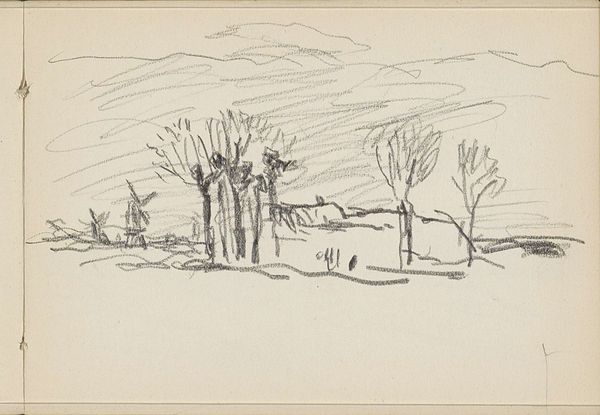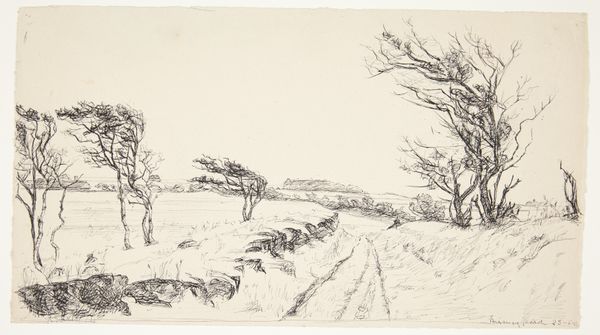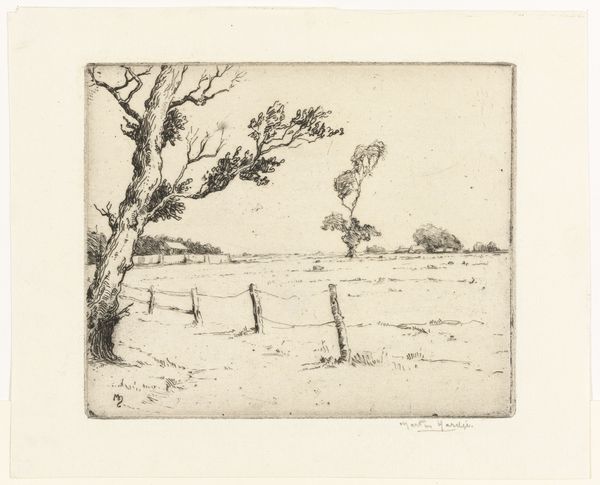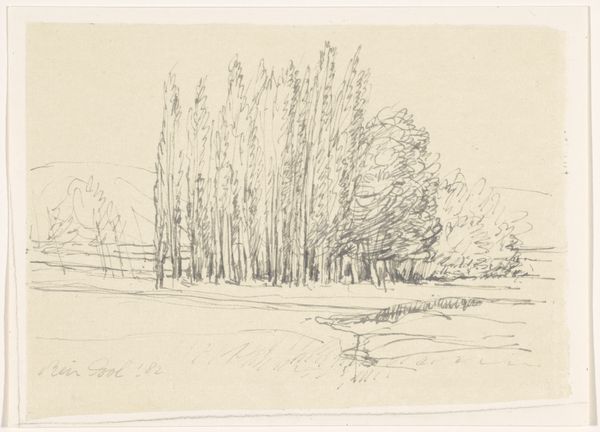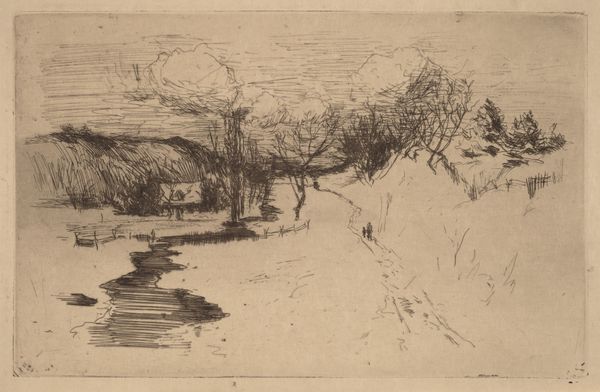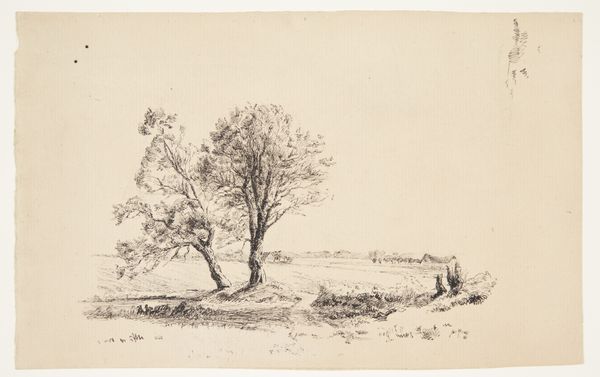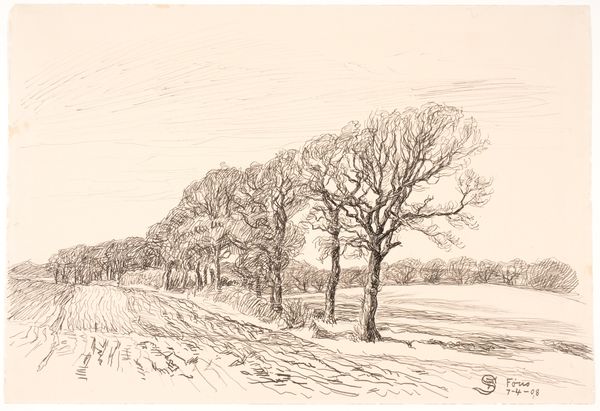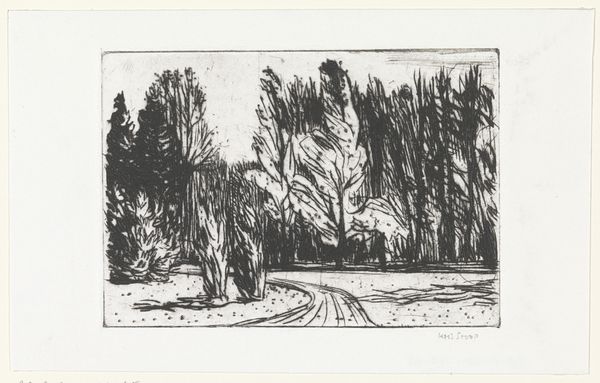
drawing, ink
#
drawing
#
dutch-golden-age
#
pen sketch
#
landscape
#
etching
#
ink
#
realism
Dimensions: height 168 mm, width 249 mm
Copyright: Rijks Museum: Open Domain
Curator: Immediately, I’m struck by the simplicity of it. There’s a cow, a field, a row of trees—a sort of quiet pastoral scene, no frills. Editor: Indeed. What you're observing is Willem Wenckebach's "Grazende koe en wilgen langs een sloot" (Grazing Cow and Willows along a Ditch), made before 1893. It's a drawing employing ink and etching, currently residing here at the Rijksmuseum. I find its lack of ornamentation quite telling, almost stark. Curator: Stark is a great descriptor. What stands out to me, though, is how the mark-making really defines the different textures. You have this very tight hatching creating depth in the foliage contrasting against the wide, untouched spaces that constitute the field. And the precision of the etched lines—they speak to a certain labour, right? The labour of observing, of translating, of constructing this landscape via a very deliberate process. Editor: Precisely. And one must consider this imagery through the lens of late 19th-century Dutch society, grappling with industrialization. This idyllic, rural image then becomes charged. It evokes a nostalgia, perhaps, a commentary on the changing landscape—both literally and socio-economically—due to modernization. What is the impact of industrialized farming on Dutch national identity? Curator: Absolutely. And I see how this work also participates in debates around art and craft, its emphasis on technical skill, but also its subtle political commentary. Does the reproductive nature of etching – a technique designed for wider dissemination – affect our appreciation, given its humble materials and everyday subject? Editor: Exactly. The materiality allows for a broader discussion, particularly around the value of art and the representation of rural life. Who gets to see and consume this vision of the Netherlands, and what does it signify for different classes? Curator: Food for thought, indeed. It began with simplicity, but quickly opens a doorway to much wider consideration of social tensions, class divisions, the intersection between rural ideals and growing industrial reality. Editor: It goes to show even the quietest landscapes can have some cutting things to say about identity and cultural value when looked at the correct way.
Comments
No comments
Be the first to comment and join the conversation on the ultimate creative platform.

